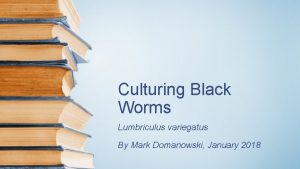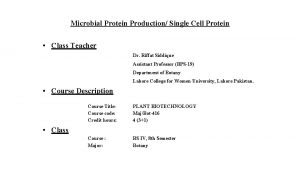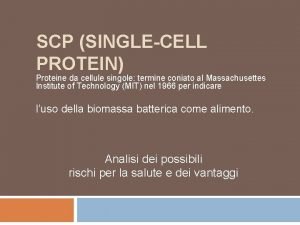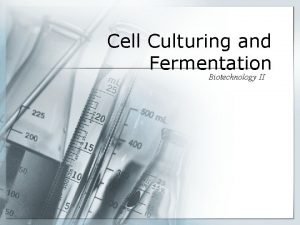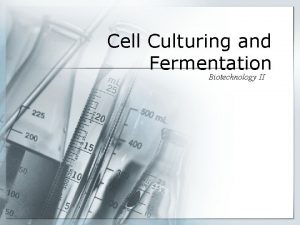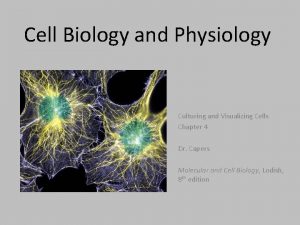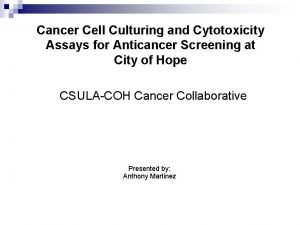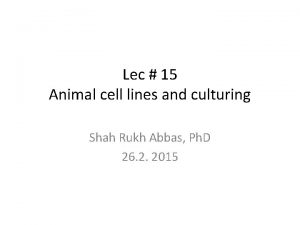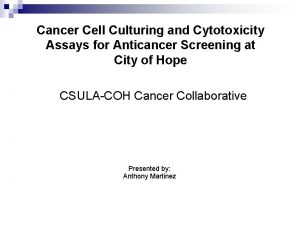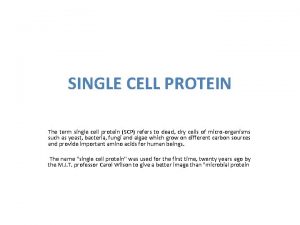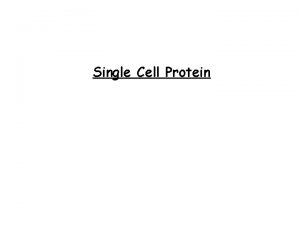Protein functionalization and 3 D cell culturing with













- Slides: 13

Protein functionalization and 3 D cell culturing with PEG Ilyssa Evans Spring 2016

Background Polyacrylamide for Cell Culturing Node Pore Sensing u u Low-cost method that measures transit times of cell as they interact with different antibodies throughout a channel Can be used to determine the phenotypes of cells Goal: functionalize and pattern proteins/antibodies in a microfluidic channel using UV light Stiffness Factor u u “Stiffness” of tissue in our body naturally varies Varying stiffness of extracellular matrix has great impact on traits of anchorage -dependent cells (MCF 7) Goal: find a suitable hydrogel for cells to grow on that can easily have it’s stiffness changed

Refresher

Methods – Part I Functionalization of PDMS Devices Photoinitiator Tape + UV Light m. Cherry (with –SH group) X 4 PBS+ Fluorescence

Is it Traut’s reagent? Beginning of Channel Non-Trauts Middle of Channel Non-Trauts

Is functionalization happening? Multiple Iterations Plasma Silane Protein 15 minutes 24 hours Silane Plasma Protein Silane Protein

New Approach to Cell Culturing PEG!

PEG Hydrogels General u u Polyethylene glycol is a polyether with many biomedical applications Water-soluble Polyethylene glycol monoacrylate Polyethylene glycol diacrylate PEG!

Methods – Part II Fabrication of PEG Hydrogels

Methods – Part II Fabrication of PEG Hydrogels + Cell Encapsulation

Cell Encapsulation PEG Cell Encapsulation – 72 hours Trial 1 Trial 2 Trial 3

Conclusion Polyacrylamide for Cell Culturing Protein Conjugation u No issues with the protein conjugation appears to be happening – it should work u Retry the original method – acrylating the channel instead of the glass or PDMS beforehand. u Need to try with photoinitiator for patterning PEG Hydrogels u Hydrogel fabrication was a success u Need to repeat 3 D cell patterning and attempt 2 D cell patterning

Methods – Part I Functionalization of PDMS Devices
 Culturing blackworms
Culturing blackworms Channel vs carrier proteins
Channel vs carrier proteins Protein-protein docking
Protein-protein docking Single cell protein ppt
Single cell protein ppt Cellule scp
Cellule scp Advantages of diaphragm cell
Advantages of diaphragm cell Prokaryotic
Prokaryotic Plant vs animal cells
Plant vs animal cells Plant cell structure
Plant cell structure Plant and animal cell diagram
Plant and animal cell diagram Primary battery and secondary battery
Primary battery and secondary battery Differences between plant animal and bacterial cells
Differences between plant animal and bacterial cells Section 10-2 cell division
Section 10-2 cell division Life
Life
